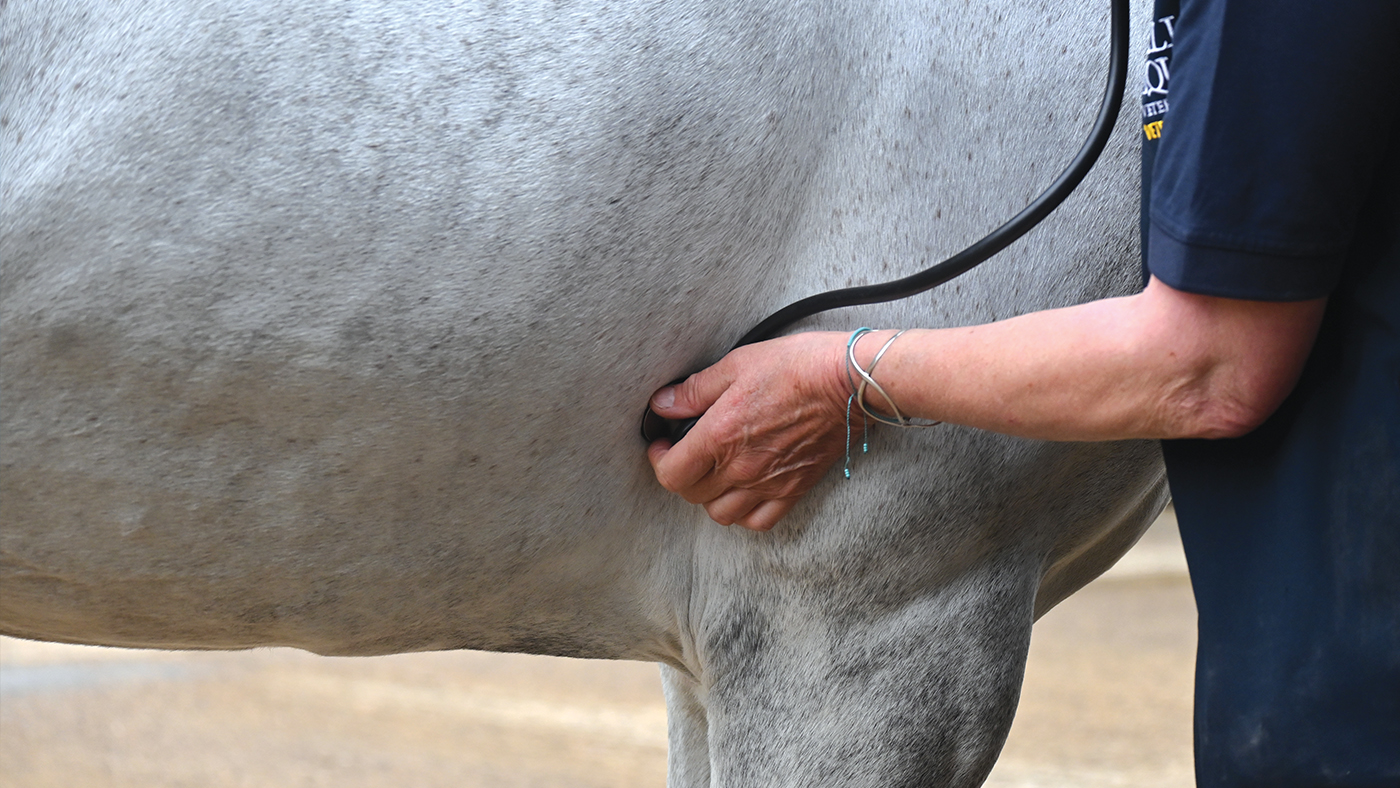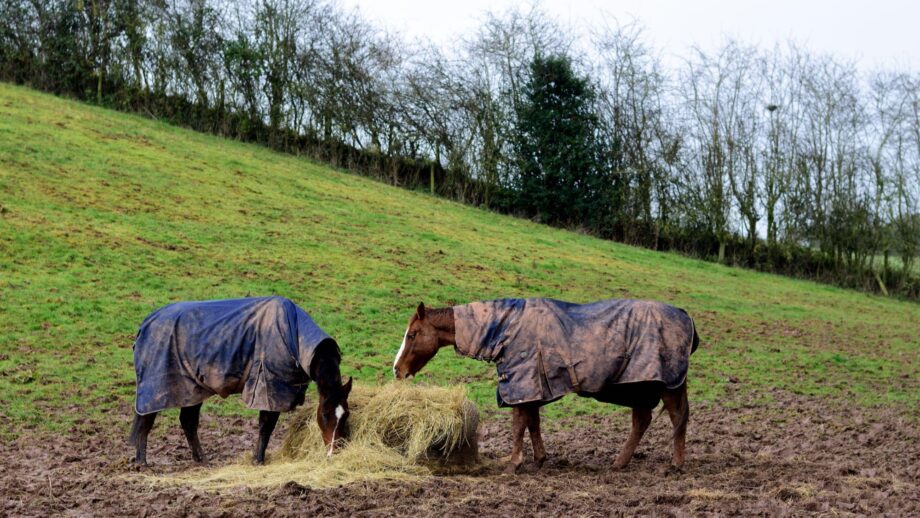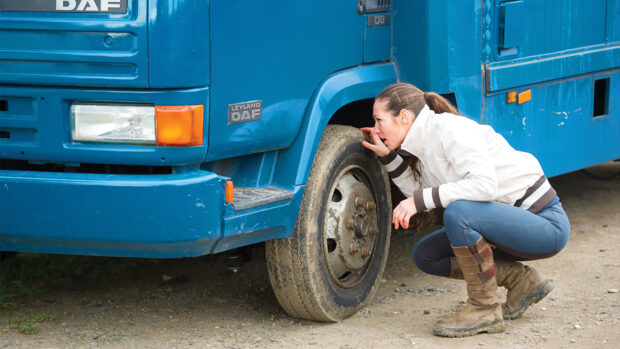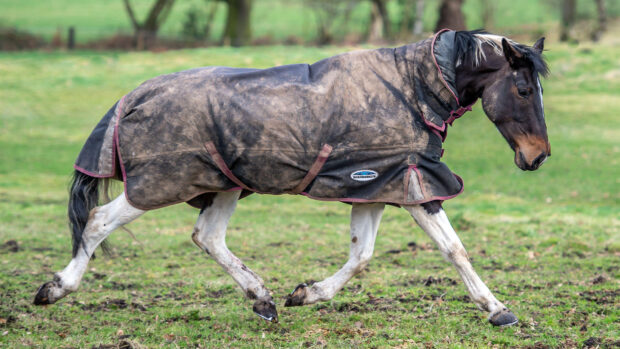Horse management never stops, and now the clocks have changed it’s worth recalibrating your inner winter equine illnesses barometer, so you are ahead of the game with problems to look out for.
While summer is all about fly sprays, hoof cracks and sweet itch prevention, winter, on the other hand, brings its own set of challenges.
Winter equine illnesses: be skin smart
Weather-related skin conditions tend to be more prevalent over the winter when fields become poached and muddy. While there are different schools of thought when it comes to dealing with muddy horses, excess washing can weaken and compromise the skin. Mud on the legs is normally best left to dry before being brushed off, if possible. Barrier creams and oils can be used as a barrier to help protect the skin from the wet.
H&H’s veterinary expert Karen Coumbe emphasises the importance of prevention.
“Mud fever and cellulitis are a huge problem for horses out in British winter mud, so anything that can be done to reduce the problem has got to be beneficial.
“The recommendations on responsible use of antimicrobials mean that vets are less likely to be able to readily dispense antibiotics, so prevention is better where possible,” she adds.
Rain scald is a bacterial infection that can develop when a horse is exposed to a lot of moisture. Rugs can help protect the horse from the inclement conditions, particularly if they have been clipped, but need to be removed daily to check the horse’s condition, including looking for early signs of skin problems. Common rain scald sites include the neck and back, and can occur under rugs if a horse becomes too hot and sweats, which can also cause rubs.
“We also see a higher occurrence of blackthorn injuries over winter,” says Lawrence Gill, who is the executive director of KBIS.
Blackthorns can penetrate soft tissues and lead to infection.
According to Francis Martin, CEO of The Insurance Emporium, it’s important for equestrians to choose insurance cover that meets their horse’s needs, and now is the perfect time to revisit this.
“We suggest policyholders look closely at what their policy covers them for,” he states. “Vet’s fees can feature as an optional added benefit, with standard policies typically covering equine death, theft, or straying.”

Get to know what’s normal for your horse to help you spot signs of illness.
Be clued up on colic
Colic is a year-round equine illness, with impaction colic being a potentially fatal condition that needs to be on your winter watchlist. Impaction colic is often associated with changes in a horse’s diet, increased stabling, less movement and reduced water intake.
When the temperatures drop, check that your horse has plenty of fresh drinking water daily. If they live out, ensure you remove ice from their trough. If stabled with automatic waterers, it is wise to also provide buckets of water in case the automatic system freezes. Adding warm water to buckets may also encourage horses to drink and adding water to your horse’s hard feed can also help maintain hydration.
Monitor your horse for signs of reduced or dry droppings, as that could be an early indications of an impaction forming.
“Colic is often more common in stable kept horses,” Karen explains. “It is important to ensure they have a regular routine – especially for feeding – and that they do not eat their bed, which can result in unpleasant impactions or blockages.
“Worm control is also important, so make sure worm egg counts are part of preventative health care routines.”
Colic is listed as one of the most common conditions seen by The Insurance Emporium, with the average paid claim being £1,033.
“Colic once again led to the highest average claim payout, and was followed closely by digestive system conditions, such as gastric ulcers, at £911,” adds Francis.
In addition to colic, Karen warns that respiratory conditions are usually more prevalent in stabled horses.
“Stable coughs and equine asthma are a perennial issue in horses kept in, especially in dusty environments. Although there are many medical treatments available, proper dust control is essential – think dust free bedding, best possible ventilation, good quality hay and turn out.”
Look for sycamore seeds and saplings
Atypical myopathy is an often fatal illness caused by ingestion of the hypoglycin A toxin from affected sycamore seeds and saplings.
Karen advises that horse owners should remain alert for sycamore seeds in grazing areas, particularly in high seed years.
“Although it is possible to test trees for toxin levels, results can vary between trees in the same area,” she adds.
Sycamore poisoning is most likely to occur when horses are in sparse pastures, so ensuring your horse has access to plentiful supplementary forage is one way to reduce the ingestion of sycamore seeds and saplings.
Acorns are another issue, and with a bumper crop this year it’s important to clear them as often as you can or fence off areas around oak trees.
Winter equine illnesses: when to tell your insurance provider
“In an emergency, the client should always call the vet first,” advises Lawrence. “The welfare of the horse has to be the priority; horse owners should make decisions with their animal’s best interests at the forefront.
“Having said that, they should let their insurer know as soon as reasonably possible about any injury or illness. This is so the claims team can help guide them through the process and ensure that there are no barriers in place to getting claims settled, such as outstanding documents or further information being required.”
If your vet has advised your horse undergoes a diagnostic procedure, such as an MRI scan, it’s wise to inform your insurer in advance. These procedures aren’t always covered, and if they are most insurers want to know before your horse undergoes one.
Similarly, if it’s decided that your horse needs to be euthanised and you hope to claim on your equine mortality insurance, you’ll need to discuss with your insurance provider whether this decision complies with the BEVA mortality guidelines or not. It’s not always possible to do this in an emergency, but wherever possible it is best to notify insurers in advance in case there is a debate as to the best course of action. In most cases, insurers will require all treatment options to have been explored prior to a claim being considered.
- To stay up to date with all the breaking news from major shows throughout 2025, subscribe to the Horse & Hound website
You may also like:

Why horse owners need to be on high alert thanks to a bumper crop of acorns in the UK

What is loss of use insurance for horses and how does it work?

Do you need insurance to ride your horse on the road? H&H explains…

What are the risks of horse riding in winter – and how can you mitigate them? Experts weigh in…

Subscribe to Horse & Hound magazine today – and enjoy unlimited website access all year round




